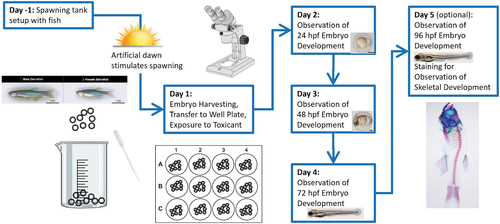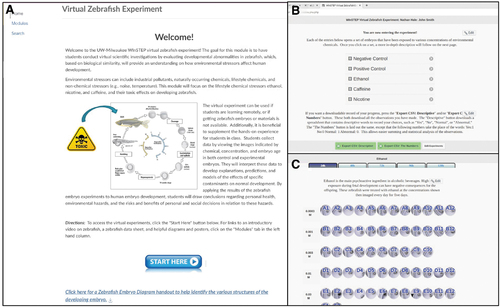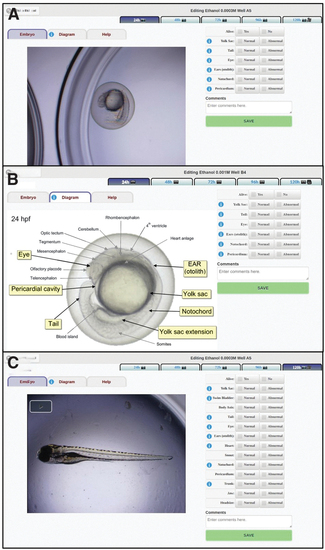- Title
-
Bringing Real Inquiry-Based Science to Diverse Secondary Educational Environments: A Virtual Zebrafish Laboratory to Investigate Environmental Health
- Authors
- Carvan, M.J., Hansen, T., Hesselbach, R., Zientek, A., Berg, C., Petering, D.H.
- Source
- Full text @ Zebrafish
|
Flow chart of operations used to create images included in the Virtual Zebrafish Laboratory. |
|
Flow chart for classroom-based module “Zebrafish as Models: Studying the Effects of Environmental Agents on Human Health” described in Tomasiewicz et al.2 This figure illustrates the processes used in the zebrafish module. On Day 1, embryos are harvested in the laboratory at UWM or in the classroom if the teacher has a successful breeding group, transferred to a well plate, and exposed to the toxicant. Each day the embryos are observed under the microscope, and the media changed. UWM, University of Wisconsin-Milwaukee. |
|
Experimental setup pages from the Virtual Zebrafish Laboratory. (A) Welcome screen, (B) selection of experimental exposures, (C) example embryo selection page. |
|
Anatomical analysis pages from the Virtual Zebrafish Laboratory. (A) Example page for recording data on 24 hpf embryos, (B) the Diagram tab reveals an image modified [from von Hellfeld, et al.11] with important anatomical structures labeled, (C) Example page for recording data on 120 hpf eleutheroembryos, which includes a short video for heart rate determination. |




